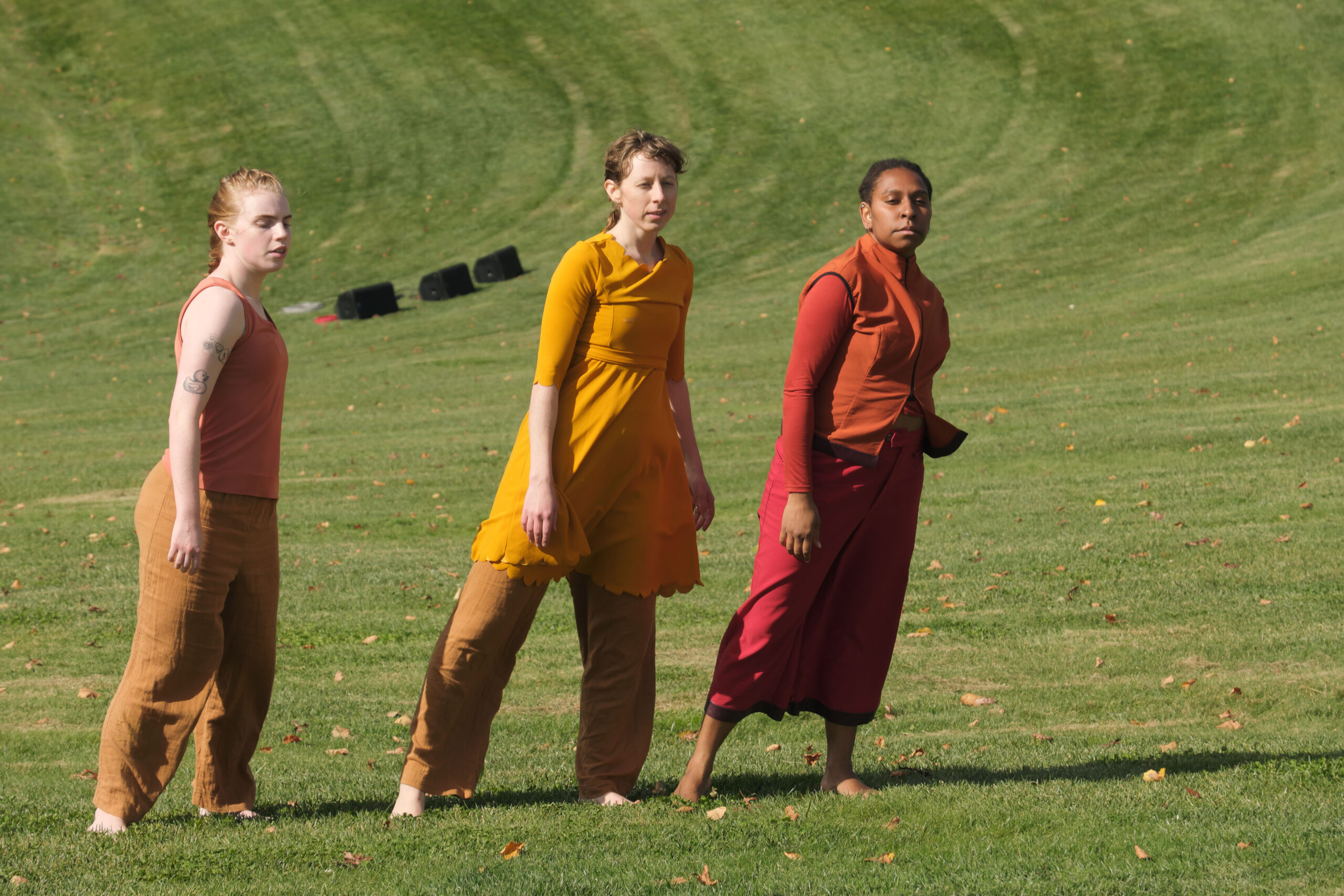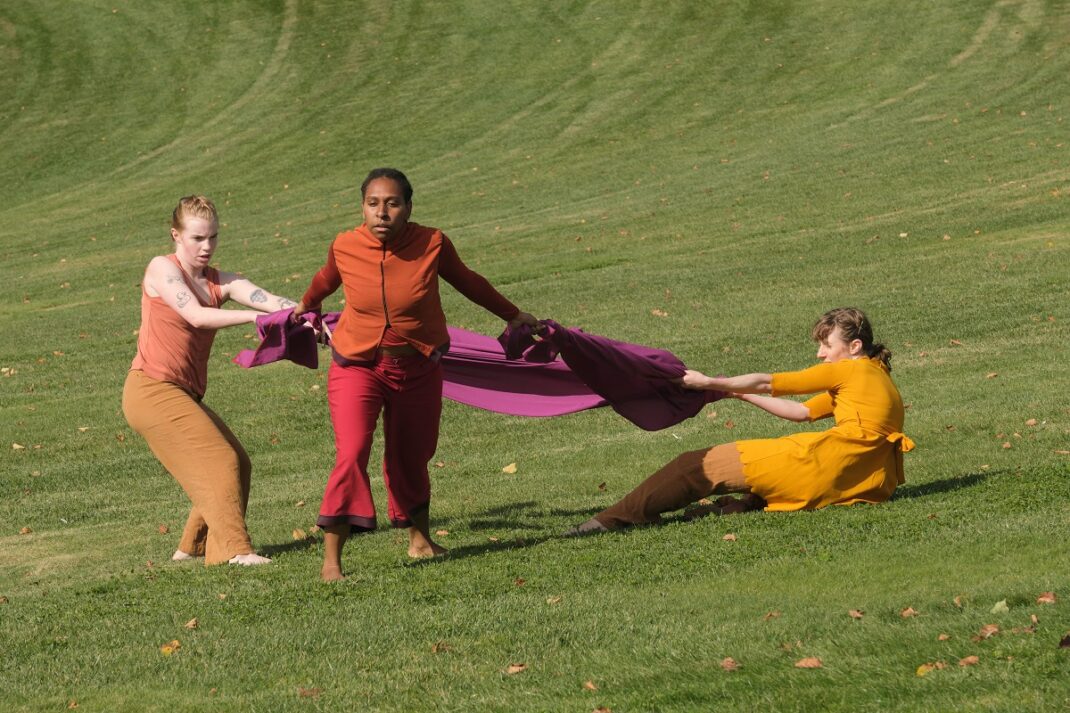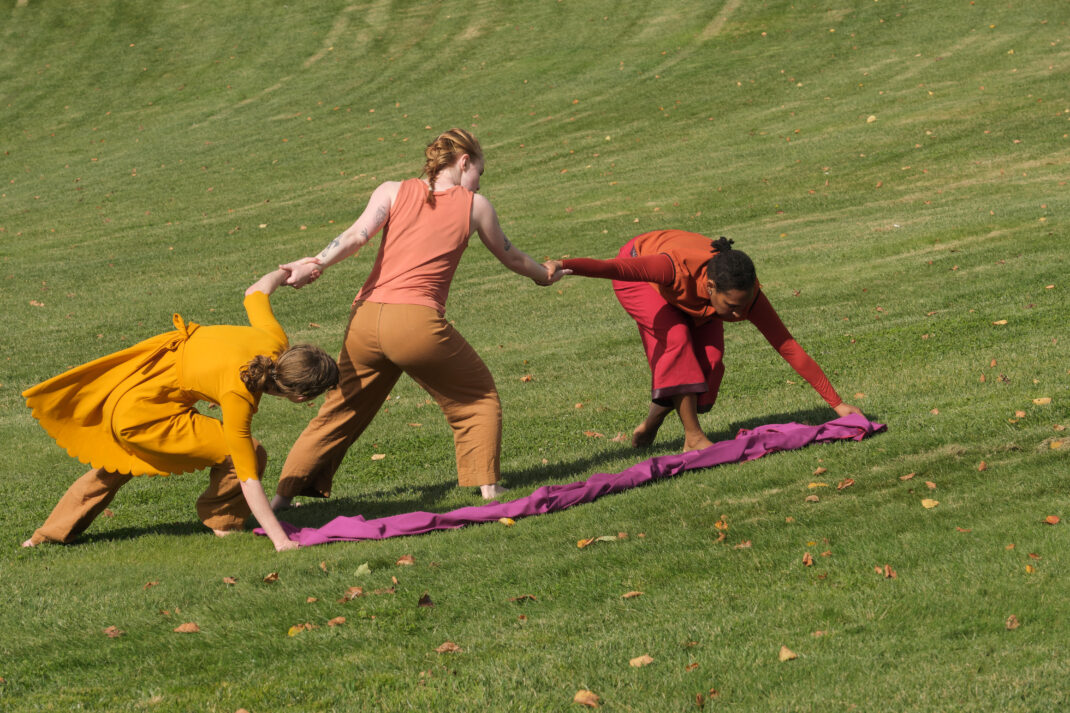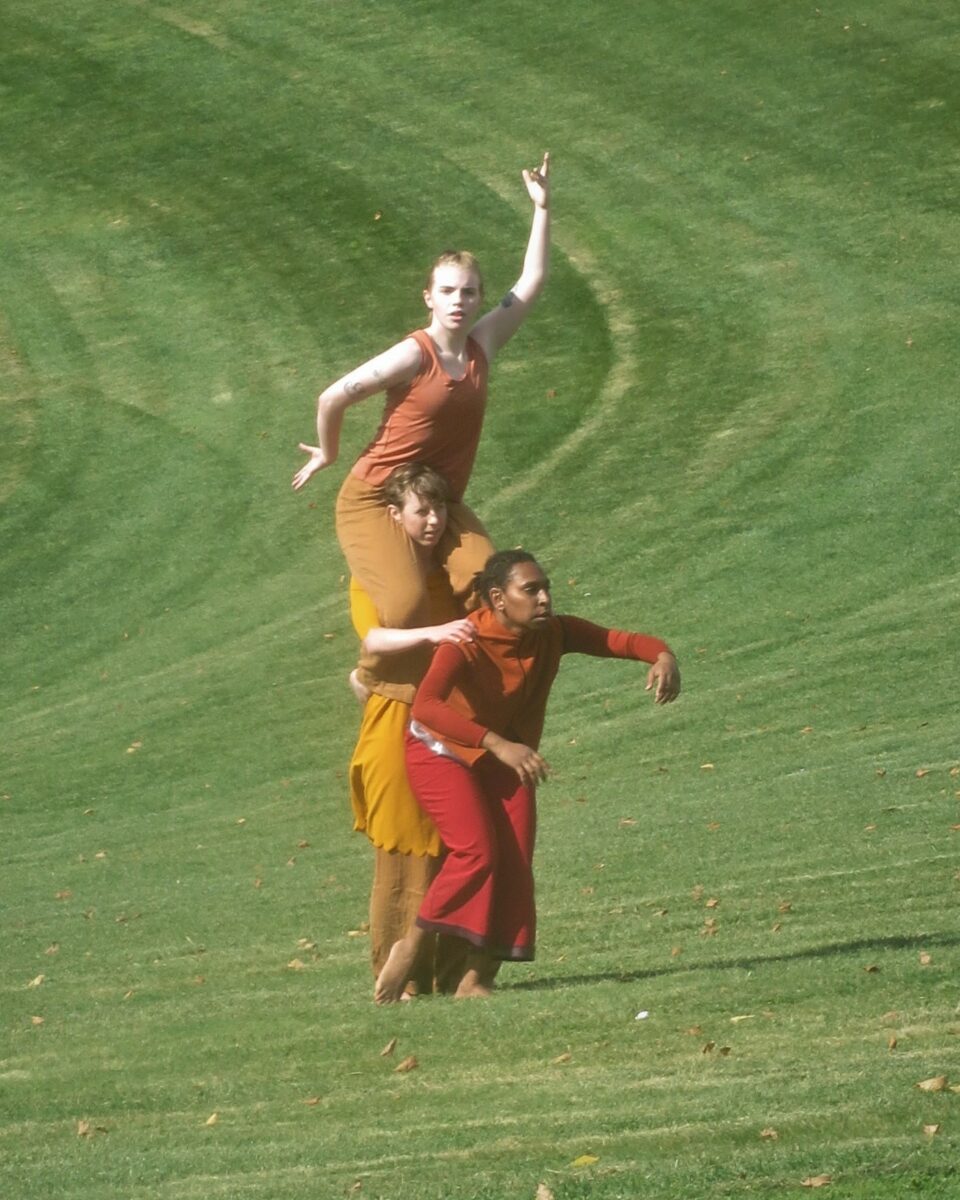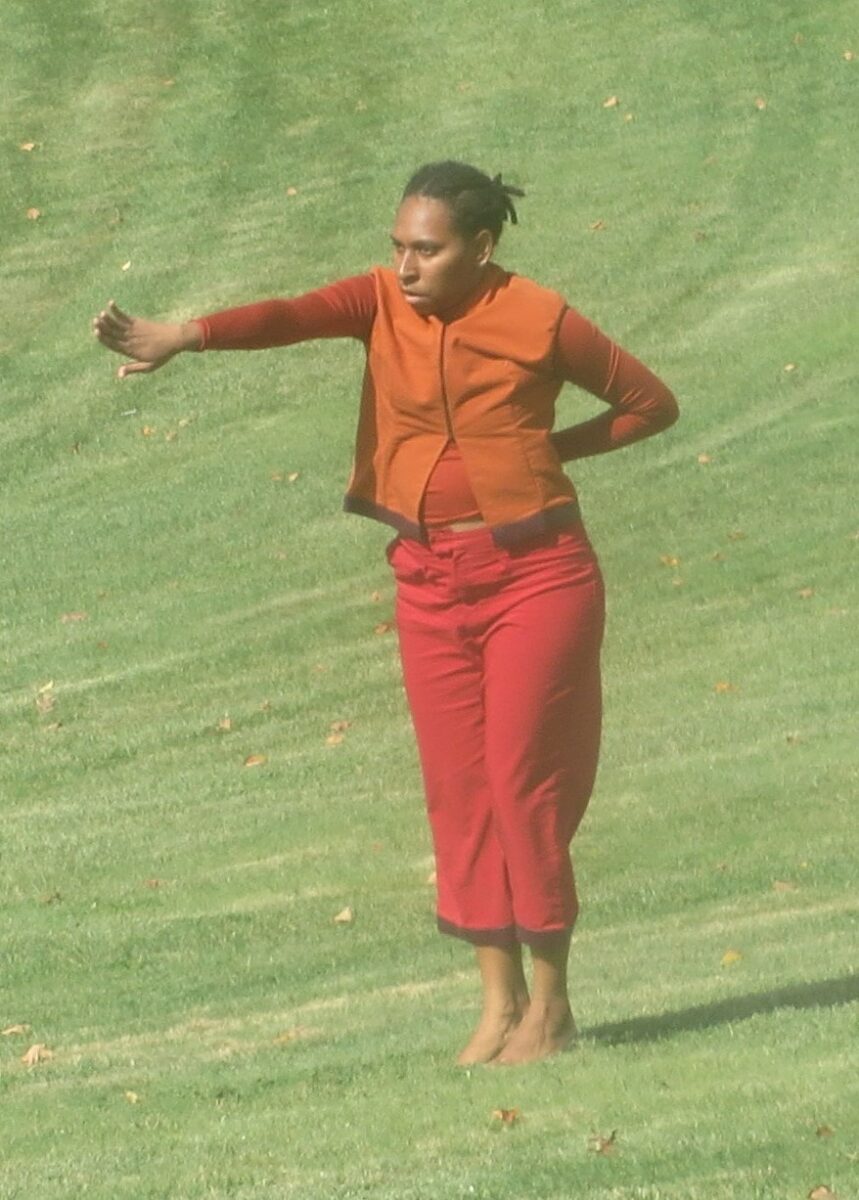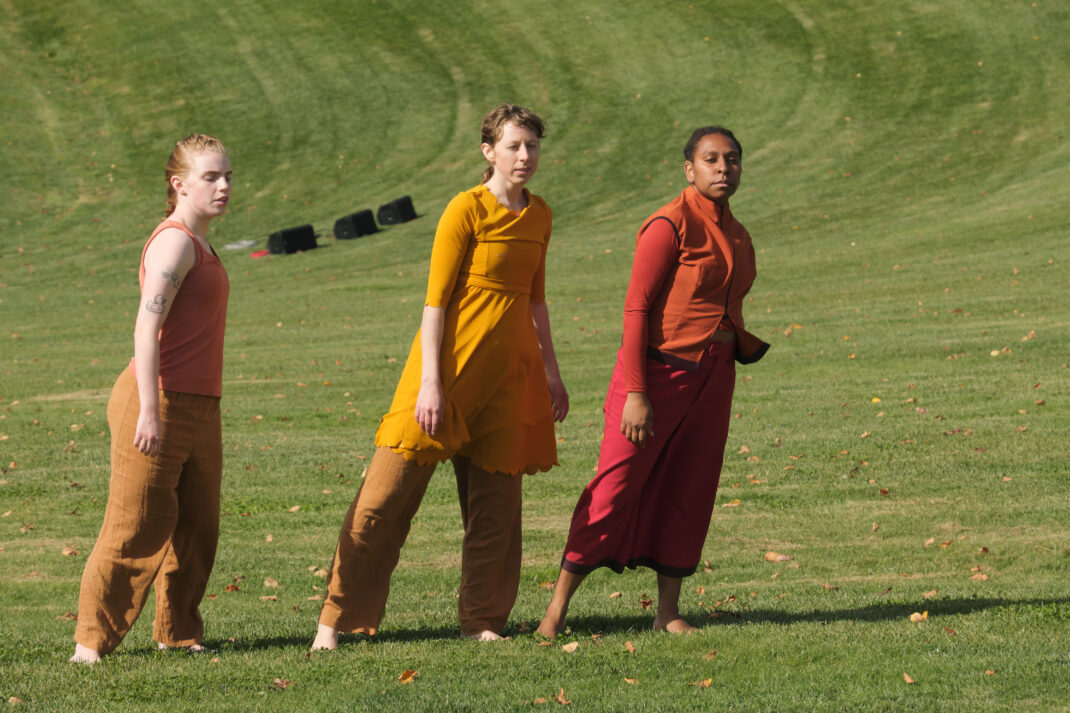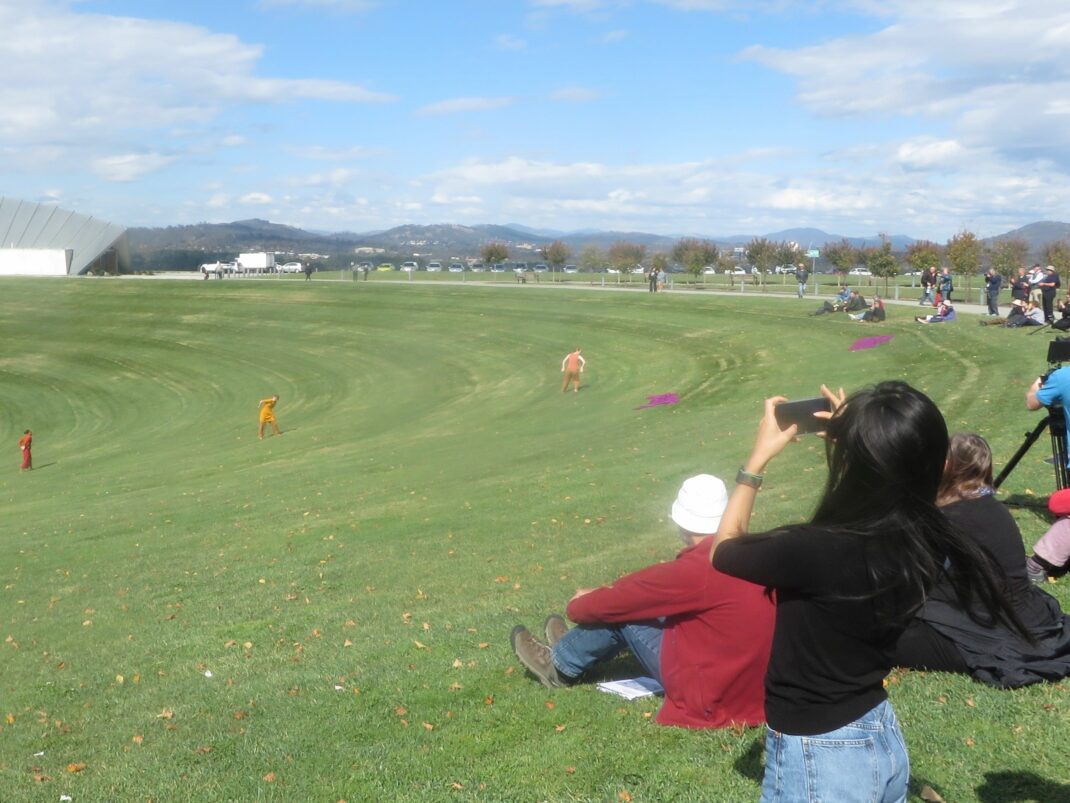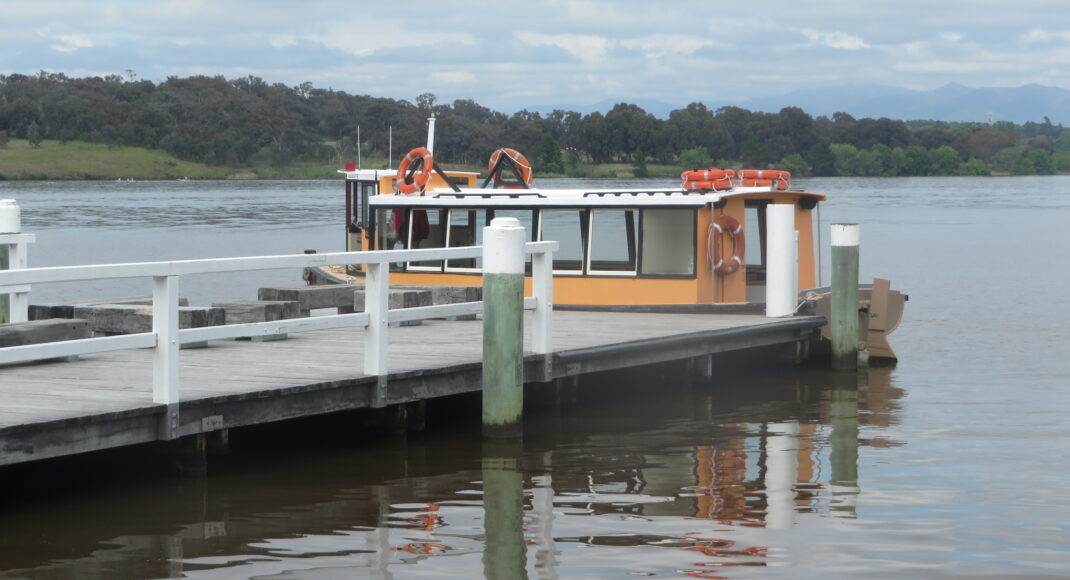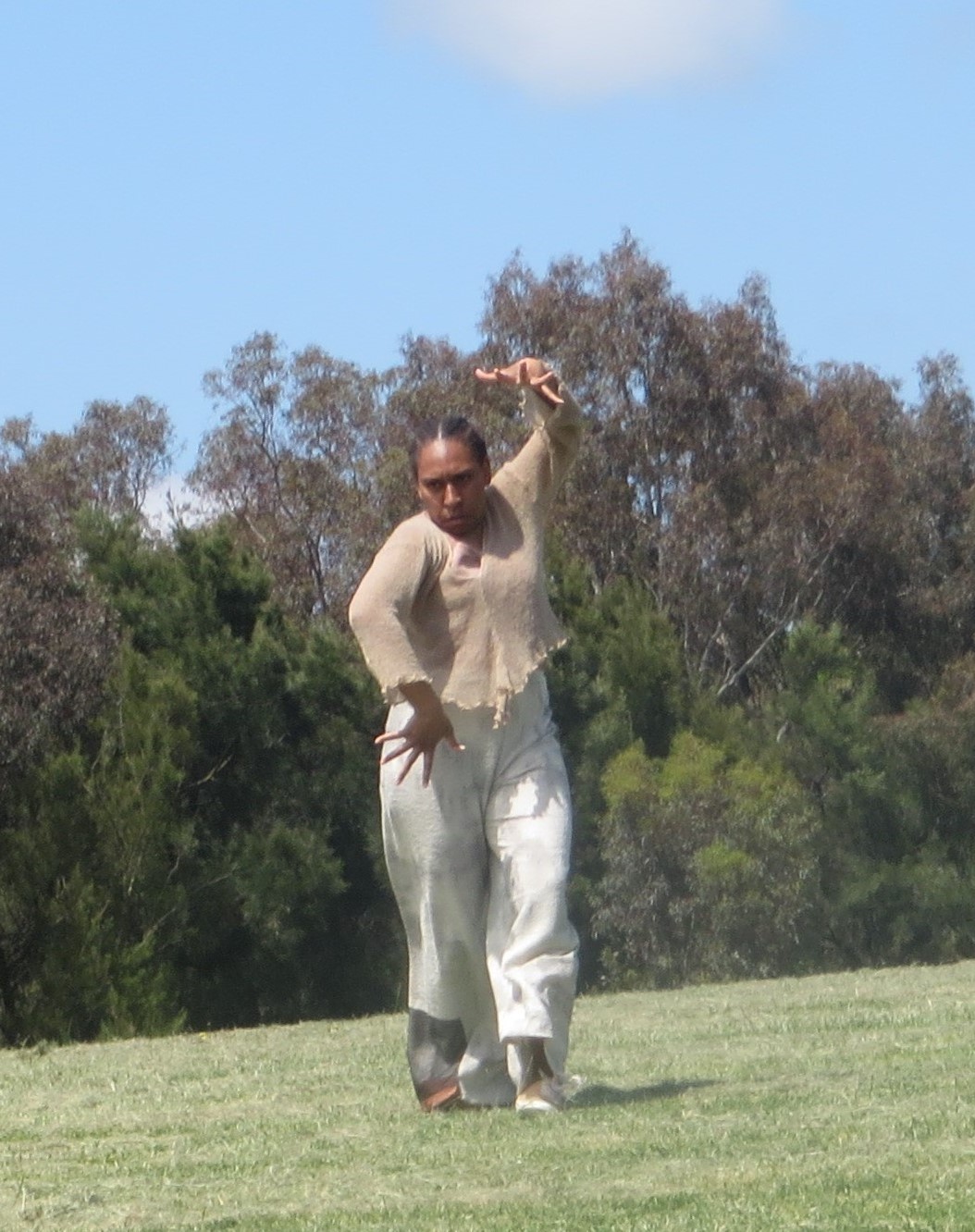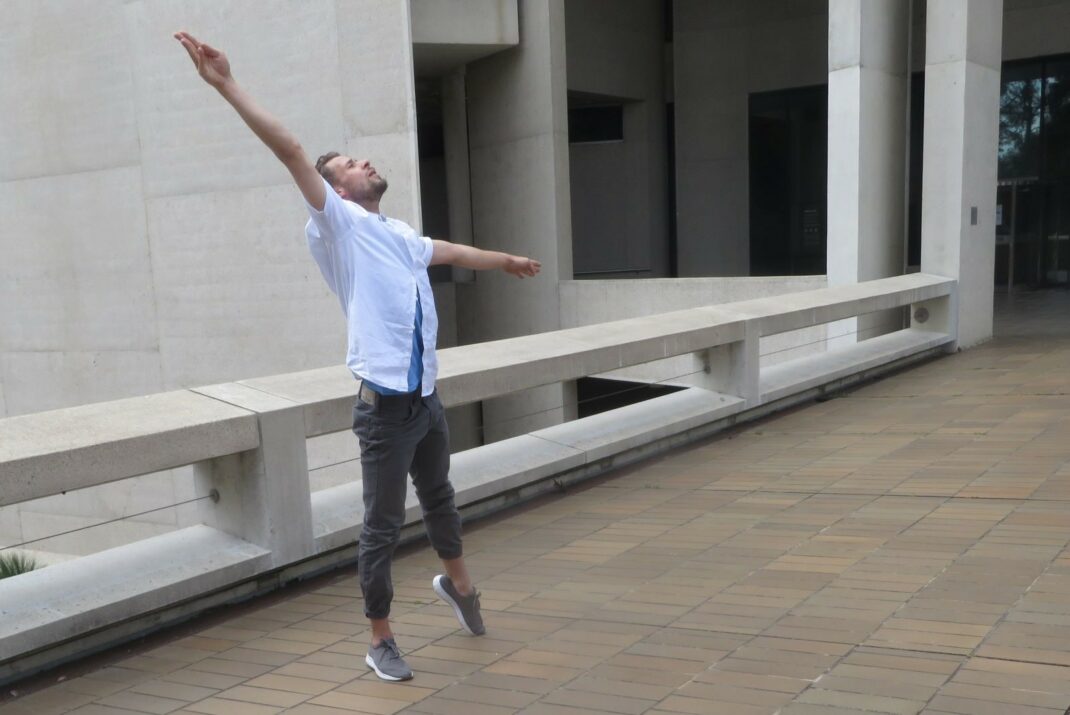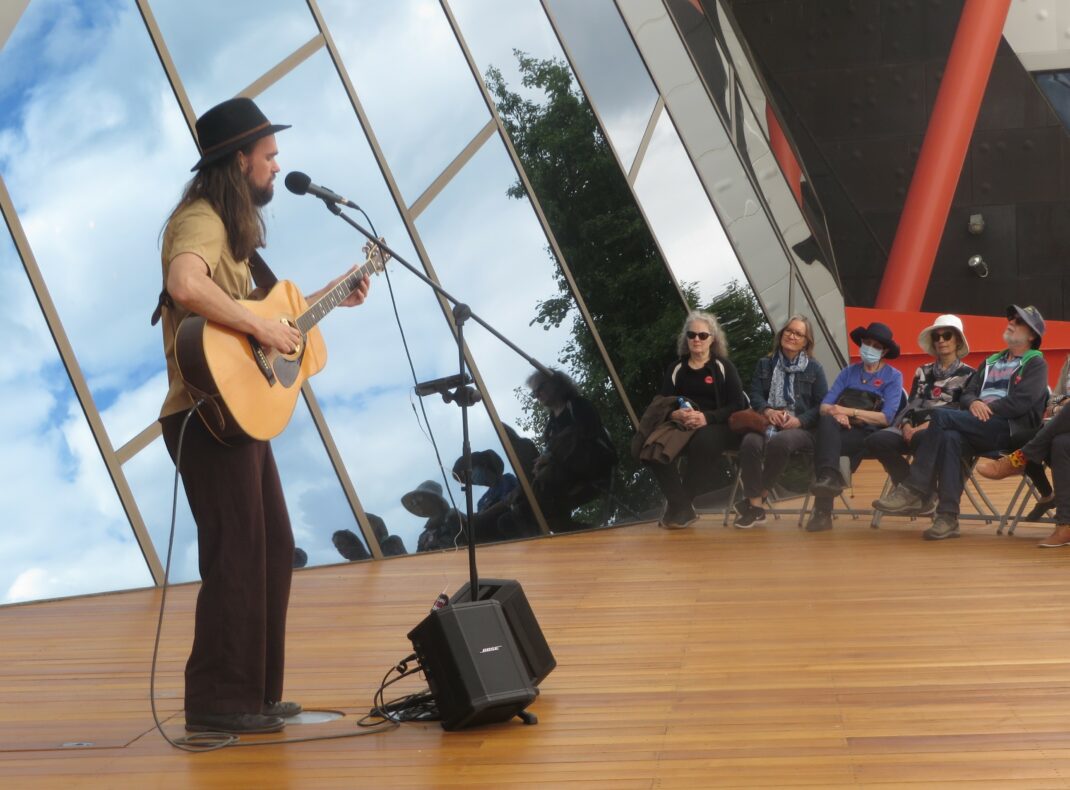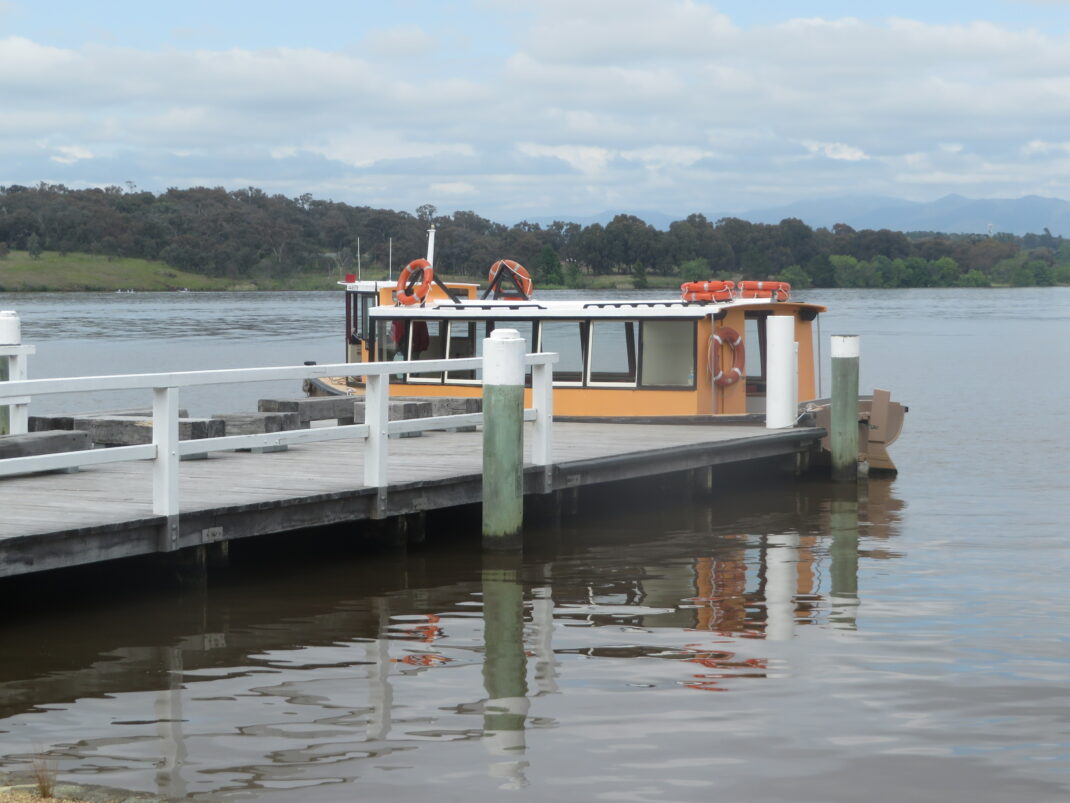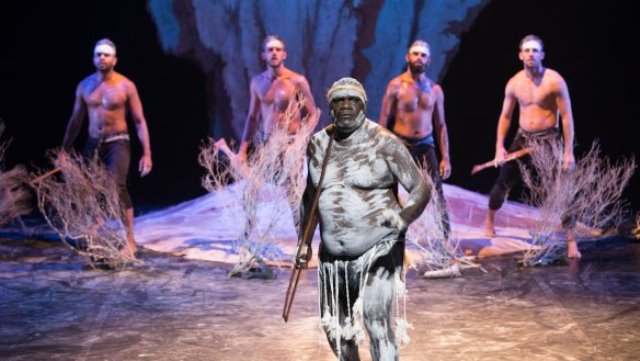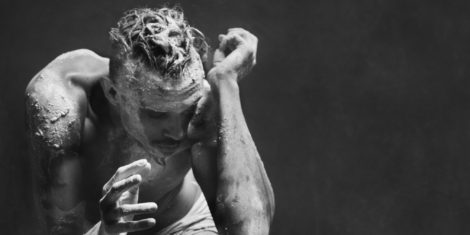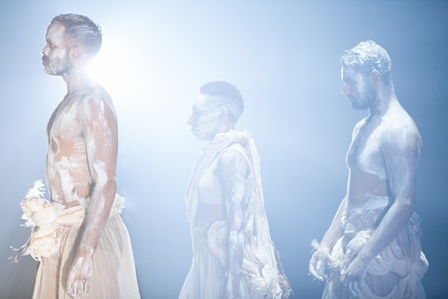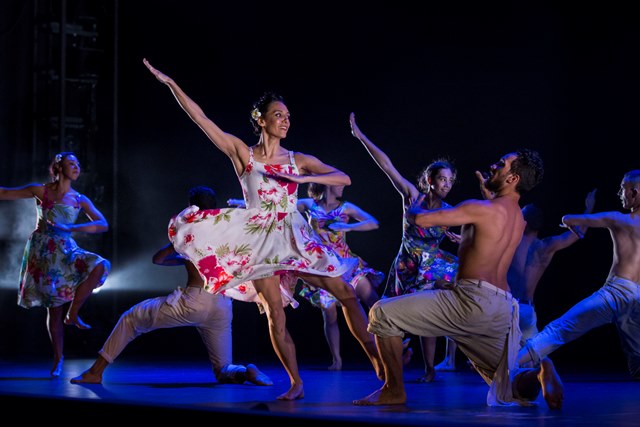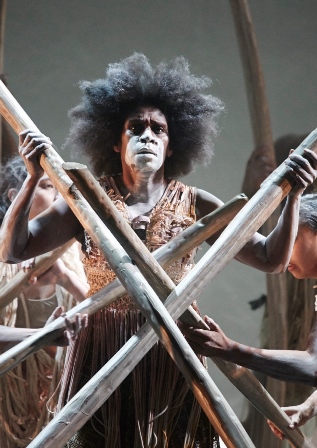Hillscape, a site-specific work with choreography by Ashlee Bye, was given just one live performance in April 2023 at Canberra’s National Arboretum as part of the Canberra International Music Festival. I reviewed it then—see this link—and largely thought that it was quite an exceptional work. I did have one issue, however, and that was that the venue, including where the audience was required to be positioned, didn’t allow us (or me anyway) to enjoy fully the choreography. We were watching it from something of a distance! But at some stage Hillscape was filmed for Ausdance ACT by Cowboy Hat Films and was shown just recently as part of Ausdance ACT’s Dance Week 2024 program.
The film allows the occasional close-up of the choreography and it was a particular pleasure to watch these close-up sections. I was especially taken by a trio where Bye explored the use of the arms in relation to the body. I was impressed too with a close up of a solo by Yolanda Lowatta where the hands featured. Also enjoyable were various views of the three dancers exploring the space of the hillside with all kinds of action, including various rolling movements across the grass. The film also gave stronger sound to Dan Walker’s commissioned score with its assortment of instruments and voices. It was absolutely absorbing.
One side issue:
Although I have no formal evidence for when Hillscape was filmed, it seems not to have been at the original performance. The grass was not nearly so green in the film as I remember from the live performance, and as appears in the still images I have used here, and in my original review. Not that it is a major issue! The venue is still stunning and in fact seems even more exceptional in the film, which looks at the work from several positions so we get a wider or more diverse view of the location than was possible when seated in just one position as was the case during the live show.
With thanks to Ausdance ACT for making the film available. I’m not sure when, or if, the film will be made publicly accessible but I hope it happens.
Michelle Potter, 6 May 2024
Featured image: (l-r) Yolanda Lowatta, Patricia Hayes-Kavanagh and Ashlee Bye in Hillscape, Australian Dance Party, 2023. Photo: © Olivia Wikner

